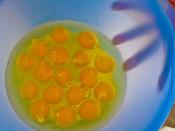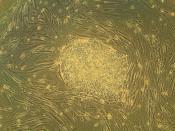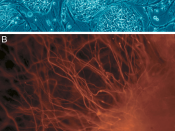Over the last several years, few areas of medical research have received as much attention as those divisions devoted to stem cell research. Research has uncovered a stockpile of omnipotent cells in many organisms that behave like embryonic cells in that they have the ability to transform into many different cell types. These cells function in injury repair, growth, and regeneration. Stem cell activity has been observed in many areas of the body including the digestive tract and bone marrow. Almost all post-natal blood cell formation occurs in the bone marrow. Here, a common population of stem cells (pluripotential hemopoietic stem cells) gives rise to progenitor cells and precursor cells that, when prompted by favorable levels of growth factors, transform into red blood cells or one of several types of leukocytes. In the lining of the small intestine and colon, the regenerative cells of the crypts of Lieberkuhn in the mucosa are responsible for cell replacement.
Until recently, it was believed that cells of the nervous system did not participate in cell regeneration and replacement. However, as reported by Gerd Kempermann and Fred Gage in ?New Nerve Cells for the Adult Brain,? research has uncovered that stem cells do function in neuron replacement.
A long-time belief was that neurons were not replaced if the cell died. It was also believed that a neuron could not repair itself if damaged. Kempermann and Gage?s article is centered on the long history of research devoted to disprove both of these theories. As early as 1965, research was being performed on rats to determine if neuron production existed. The research performed at MIT reported neurogenesis (neuron production) was found to occur in the dentate gyrus region of the hippocampus. The hippocampus is the area of the brain associated with memory and learning.


